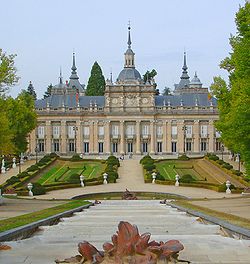This article needs additional citations for verification .(November 2025) |

The Royal Sites (Spanish : Reales Sitios) are a set of palaces, monasteries, and convents built for and under the patronage of the Spanish monarchy. [1] They are administered by Patrimonio Nacional (National Heritage), a Spanish state agency; most are open to the public, at least in part, except when they are needed for state or official events.
Contents
- Royal palaces
- Royal convents and monasteries
- Sanctuaries under royal patronage
- Other royal sites residences
- Former royal palaces
- References
- External links
Here is a list of the Patrimonio Nacional royal sites, with the provinces where they are located.



